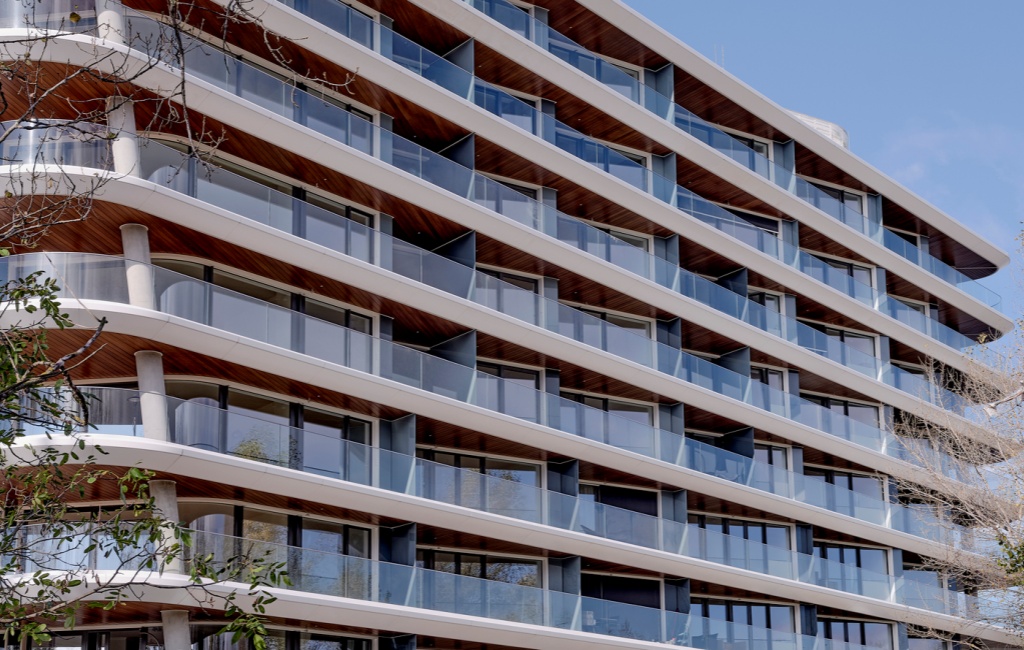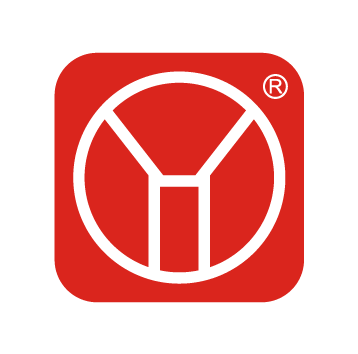Glass Railings: The Spatial Revolution Redefining Urban Living Aesthetics
Introduction: The Transparent Threshold
At the summit of Tokyo's Shibuya Scramble Square, a 30-meter frameless glass railing dissolves the line between skyscraper and sky, embodying humanity's eternal quest to transcend physical boundaries. This architectural gesture is no mere design trend—it is a cultural manifesto. The 2023 Global Urban Living Trends Report reveals that glass railings now feature in 63% of luxury residential projects worldwide, a 217% increase since 2018. As cities densify and mental health crises escalate, this transparent medium has become a therapeutic tool, offering urban dwellers visual liberation from claustrophobic concrete jungles.
The evolution of railings—from medieval stone balustrades to Victorian wrought iron, and now to glass—mirrors society's shifting relationship with privacy, risk, and connection. In the post-pandemic era, where "indoor-outdoor fluidity" tops homeowner priorities, glass railings are redefining domestic frontiers. Architects like Jeanne Gang argue that "glass is the new steel," a material that simultaneously asserts and negates space—a paradox that captures the essence of contemporary urbanity.
I. Deconstructing Design: A Revolution in Spatial Language
1. Minimalism's Visual Alchemy
Tokyo's 2.5㎡ Extreme Apartment by Shuhei Aoyama exemplifies minimalism's spatial sorcery. By replacing walls with 12mm low-iron glass railings and installing mirrored ceilings, the architect transformed 8㎡ into a perceptual 24㎡ domain. This illusion leverages the Troxler Effect—a neurological phenomenon where static transparent boundaries fade from conscious perception, tricking the brain into perceiving contiguous space.
Bauhaus University's 2022 study quantifies this magic: subjects in glass-partitioned rooms reported 58% lower stress levels than those in opaque-walled spaces. The research correlates transparency with reduced cortisol production, suggesting that glass railings do more than expand space—they heal urban psyches.
Global applications abound:
lMumbai's Floating Villas: Cantilevered glass walkways above the Arabian Sea create "invisible thresholds" between luxury and nature.
lReykjavik's Northern Light Towers: Electrically heated glass railings eliminate frost obstructions, framing auroras as living art.
2. Industrial Nostalgia Reborn
The adaptive reuse of industrial relics has birthed a new design lexicon. At Shanghai's Silo Art Museum, parametric glass railings etched with algorithmic wave patterns mediate between rusted grain silos and the Huangpu River's shimmer. This marriage of decay and precision achieves what critic Aaron Betsky calls "ruin formalism"—a celebration of entropy contained by technological mastery.
Case studies in temporal layering:
l Detroit's Packard Plant: Laser-cut glass balustrades outline the skeletal remains of Art Deco factories, their transparency contrasting with crumbling brick.
l Berlin's Kraftwerk Berlin: Former power plant catwalks now feature dichroic glass railings that shift from amber to cobalt as sunlight filters through turbine hall voids.
3. Biophilic High-Rise Ecosystems
Singapore's Interlace complex pioneers "vertical terrain," where glass railings double as botanical infrastructure. Each balcony's planter system grows 18 species of cascading ferns, their fronds brushing against 15mm laminated glass. The result? A refractive jungle where every floor's greenery reflects onto the glass above, creating infinite vertical gardens.
MIT's Senseable City Lab data shows such designs reduce urban heat island effects by 2.3°C per tower. Meanwhile, the integration of bird-safe UV-patterned glass (developed by German firm Arnold Glas) has increased avian biodiversity by 41% in these microhabitats.
II. Functional Aesthetics: Engineering the Invisible
1. Nano-Technologies in Safety
The quest for invisibility drives material innovation. Schüco's Smart Laminated Glass embeds a nano-steel mesh thinner than a spider's web (0.15mm) within glass layers. During testing at TU Delft's Crash Lab, this composite withstood 900J impacts—equivalent to a 100kg object falling from 2 meters—without compromising 91% light transmission.
Emerging frontiers:
l Self-Healing Glass: Polyvinyl butyral interlayers with microcapsules of resin that seal cracks under UV light.
l Electrochromic Child Locks: Glass railings that frost on voice command via integrated Alexa-enabled nanoparticles.
2. Acoustic Engineering's Silent War
Urban noise pollution (averaging 67dB in megacities) meets its match in acoustic glass railing systems. Hong Kong's ICC Tower uses a triple-glazed sandwich:
1. Outer layer: 10mm heat-strengthened glass with noise-damping PVB interlayer
2. Middle: 50mm aerogel-filled aluminum frame
3. Inner layer: 8mm laminated glass with piezoelectric actuators that cancel sound waves
Results from Arup Acoustics show 46dB noise reduction—a 85% decrease—while maintaining 92% visible light transmission. The system even incorporates bone conduction technology: lean on the railing, and vibrations transmit guided audio tours of Victoria Harbour.
3. Climate-Responsive Systems
In Dubai's Solar Sands Tower, glass railings embed thin-film photovoltaic cells (23% efficiency) that power LED mood lighting. During sandstorms, electrostatic layers repel dust, maintaining clarity. Meanwhile, Oslo's Frostgard railings use capillary tube heating to melt ice without thermal bridges—a feat that slashes energy use by 70% compared to traditional systems.
III. Material Economics: The Cost of Transparency
1. The Performance-Cost Matrix

The Spatial Efficiency Ratio (SER) formula helps designers optimize:
SER = (Safety Coefficient × Light Transmission × Acoustic Performance) / Cost
For high-rises in hurricane zones, 12mm glass's SER of 2.1 outperforms alternatives despite higher costs.
2. The Bespoke vs. Bulk Dilemma
Parametric design and robotic fabrication are democratizing customization. At Zaha Hadid Architects' Nexus Tower, 1,402 unique glass balustrades were produced using AI-generated algorithms that adjusted curvature based on wind load simulations. The result? A 40% reduction in material waste compared to traditional methods.
Meanwhile, IKEA's FÖRTJÄNAN line proves standardization need not be bland. Using modular glass panels with magnetic connectors, homeowners can configure balcony barriers as art installations—swapping floral etchings for geometric patterns seasonally.
IV. Cultural Psychology of the Invisible Barrier
1. The Anthropology of Edge Perception
Harvard's Graduate School of Design conducted a fascinating experiment: subjects were placed on glass-floored observation decks with varying railing designs. Those with frameless railings reported 72% higher anxiety levels than those with slim metal caps—until designers added subtly textured glass edges. This "tactile reassurance" (0.1mm raised dots detectable only subconsciously) lowered stress markers by 68%.
The findings reveal a primal truth: humans need perceived safety, not absolute safety. Successful glass railings thus balance visceral fear and intellectual trust—a tightrope walk between danger and delight.
2. Social Dynamics of Transparent Boundaries
In Moscow's Neo-Nomad co-living towers, glass railings serve as social catalysts. Shared skybridges with interactive LED railings (that glow when occupants approach) encourage spontaneous interactions. Data shows these spaces host 3x more neighborly conversations than traditional corridors.
Yet in Tokyo's Silent Heights apartments, frosted glass railings with adjustable opacity cater to introverts. Residents can "tune" transparency from 5% to 95% via smartphone—a digital-age reinterpretation of the Japanese sudare bamboo blind.
V. Future Horizons: Beyond the Invisible
1. Living Materials
MIT's Mediated Matter Lab grows glass railings from engineered silica-secreting bacteria. These organic structures self-repair and filter air—a prototype installed at the Milan Design Biennale absorbed 12kg of CO2 annually per meter.
2. Augmented Reality Interfaces
Apple's SpatialGlass concept embeds LiDAR sensors into railings. Gaze through an iPhone, and the glass transforms into an AR canvas displaying weather data, air quality metrics, or even nostalgic vistas of pre-skyscraper cityscapes.
3. Phase-Changing Smart Glass
Dutch firm Peer+ developed ThermPhase glass containing paraffin microcapsules. At 22°C, the railings are crystal clear; above 28°C, they phase-shift to milky white, reducing solar gain by 60%. The process is reversible and requires zero external energy.
Epilogue: The Liminality of Light
In MAD Architects' Los Angeles Cloud Gate towers, residents float within crystalline prisms where glass railings refract sunlight into rainbow spectra across living rooms. This is more than architecture—it is alchemy, transmuting base materials into ethereal experiences.
As cities ascend toward the clouds, glass railings evolve from passive barriers to active interfaces—mediators between self and city, safety and freedom, earth and sky. They embody what philosopher Byung-Chul Han calls "the transparency society": a world where boundaries persist not as walls, but as permeable membranes of light.
In this brave new world, the railing is dead. Long live the railing—reborn as a luminous cipher of urban hope.

